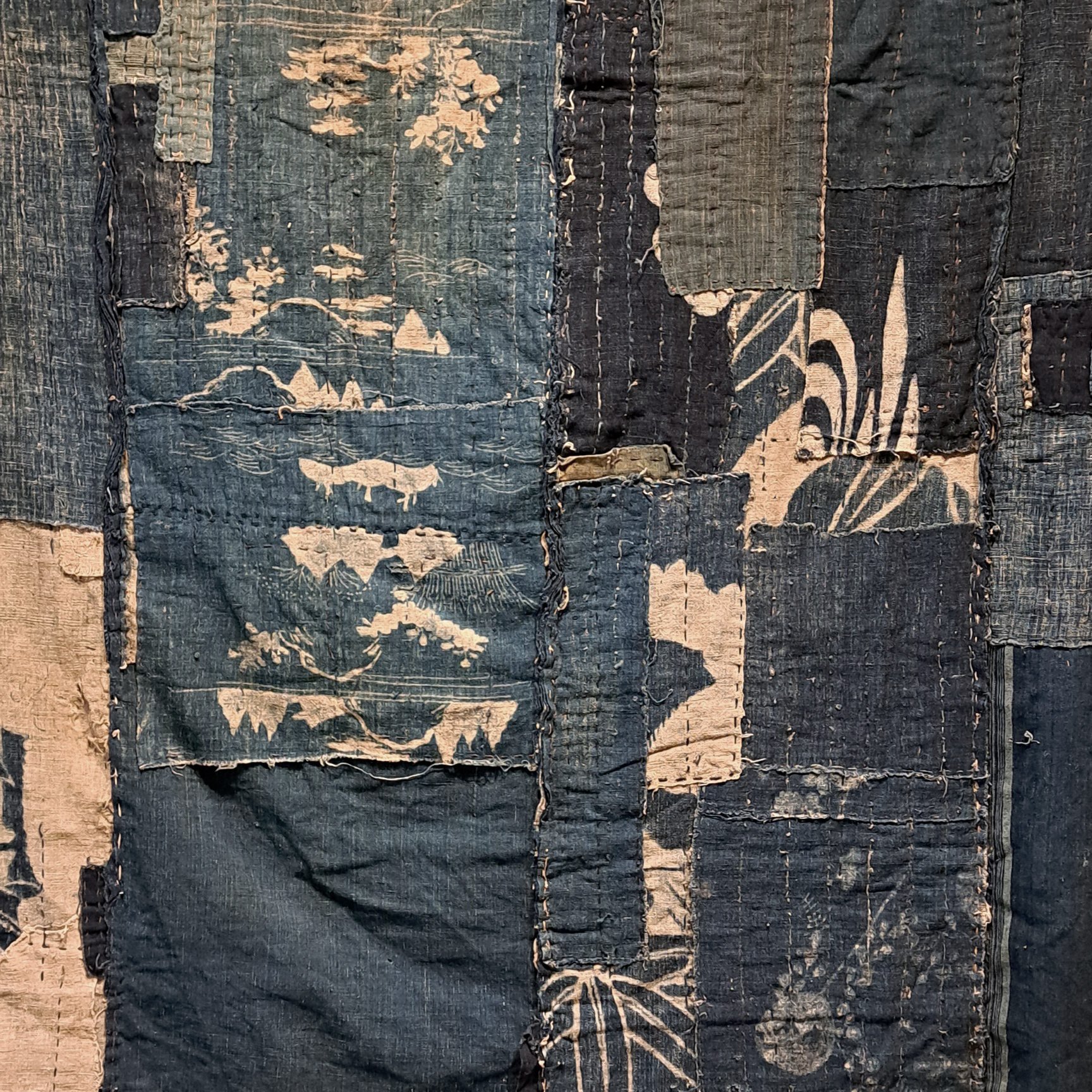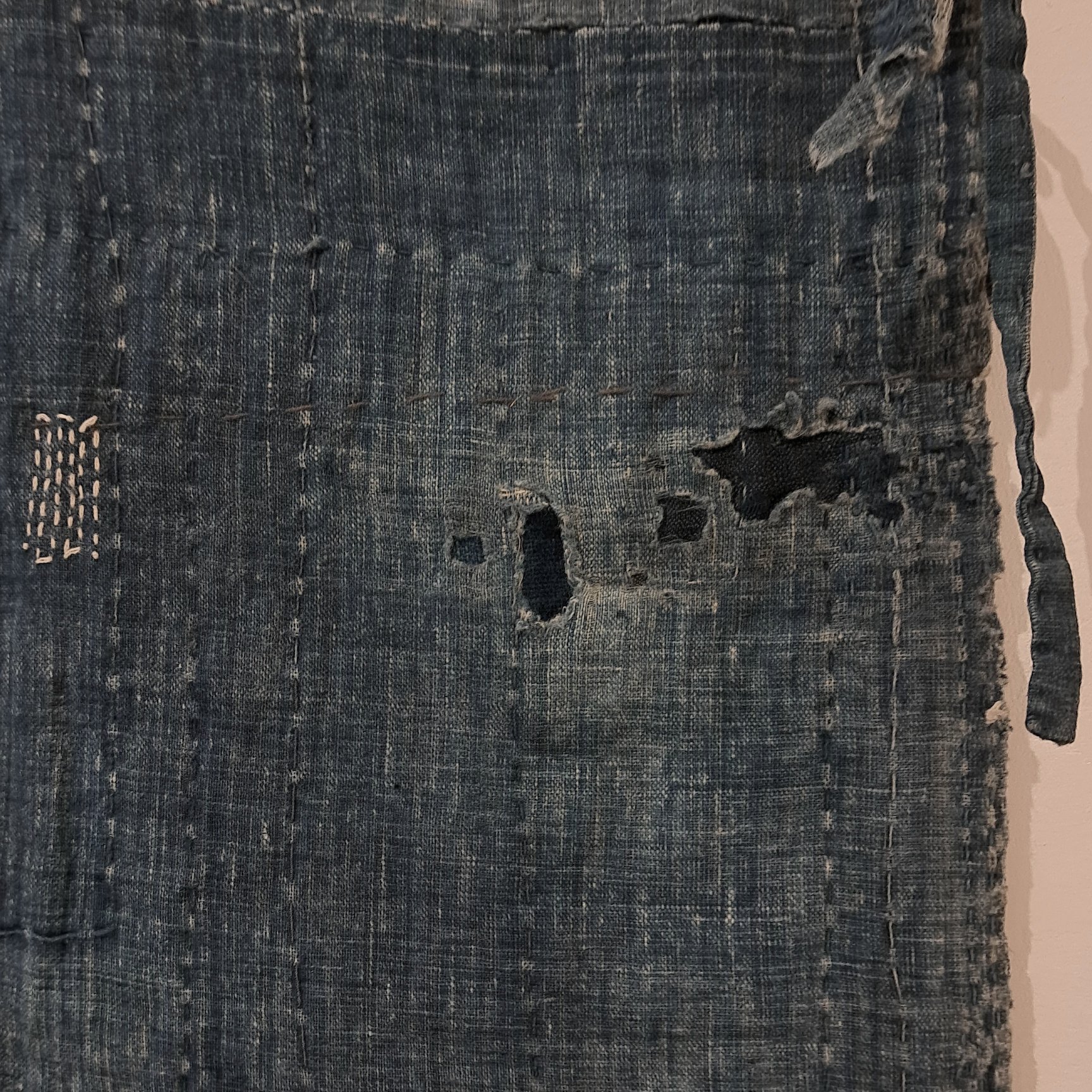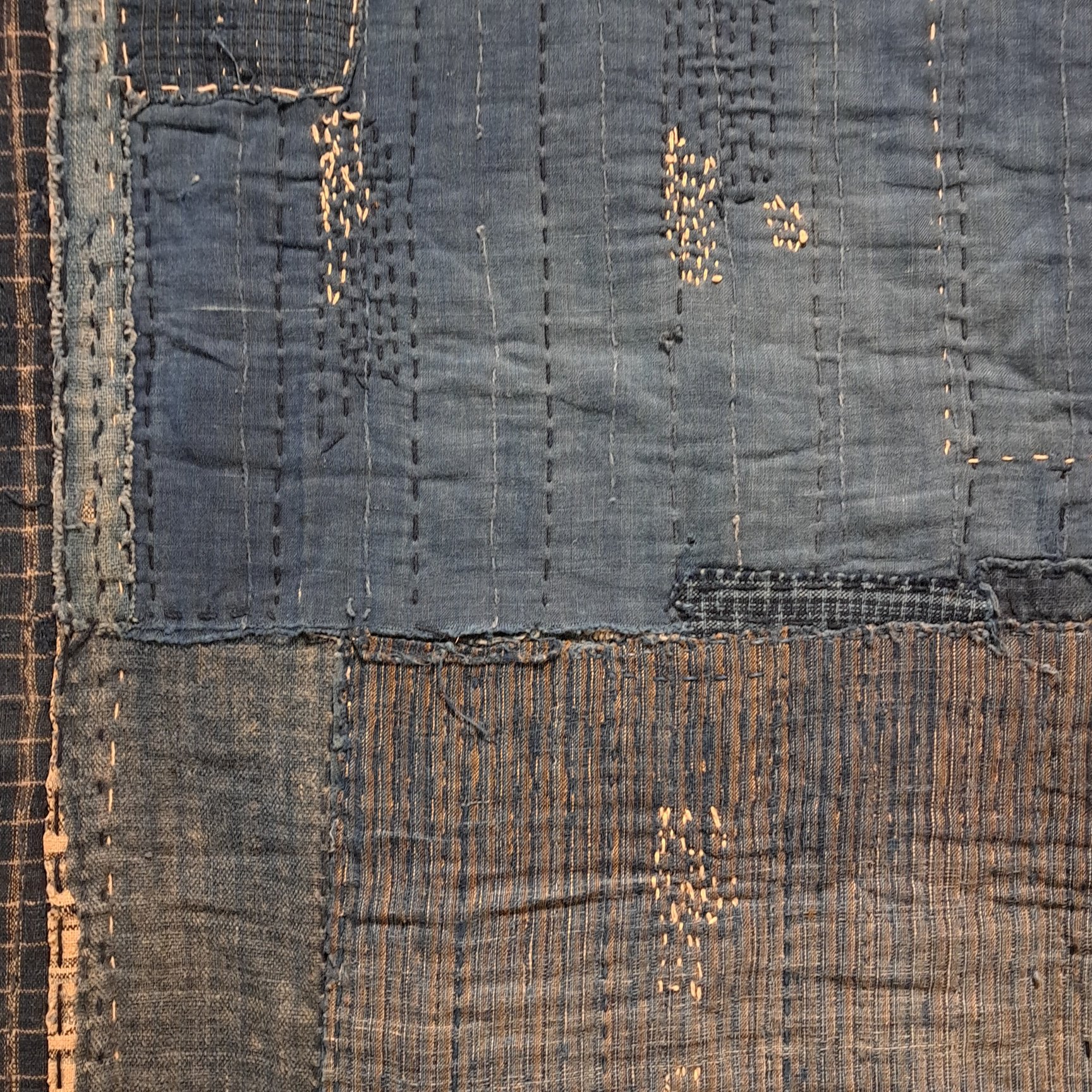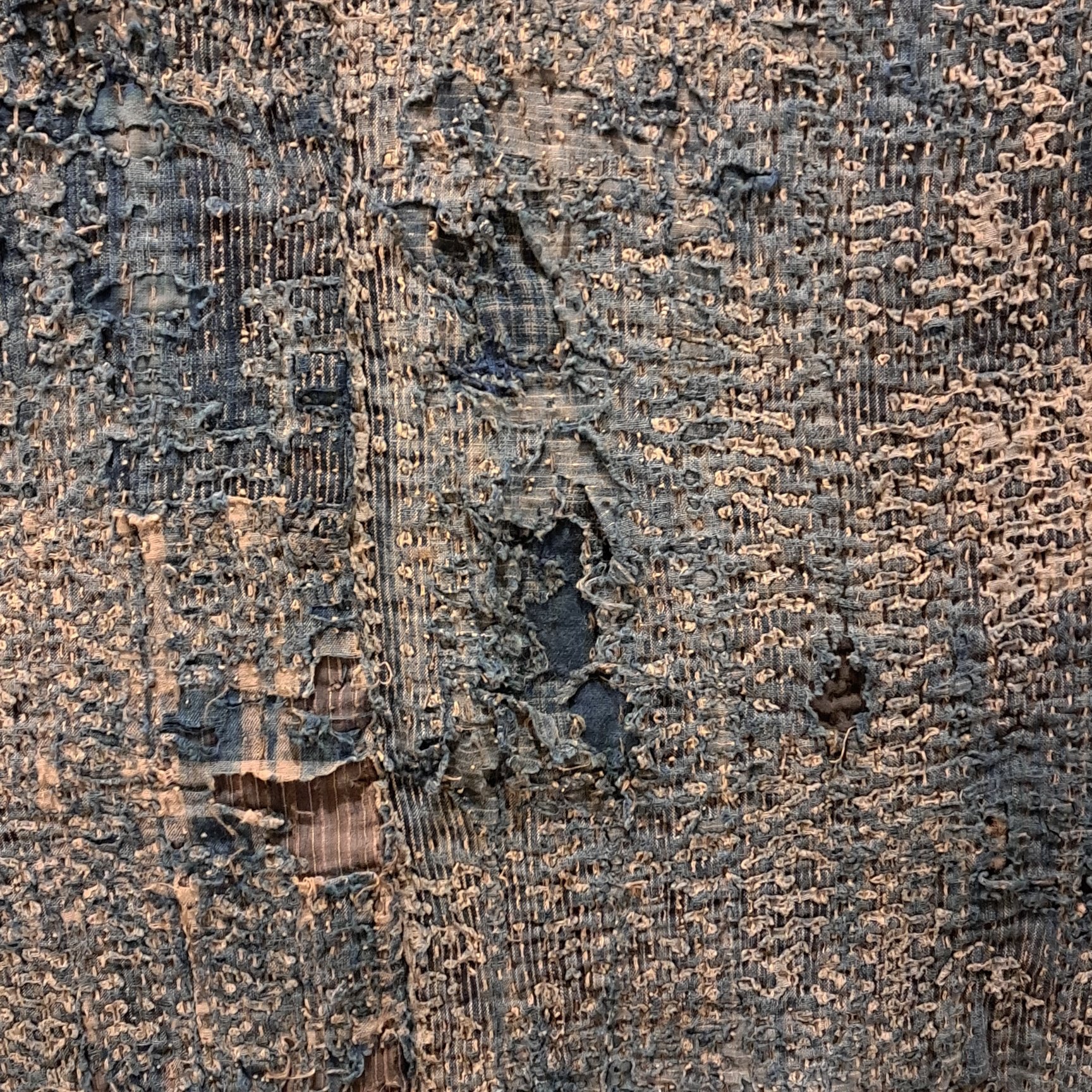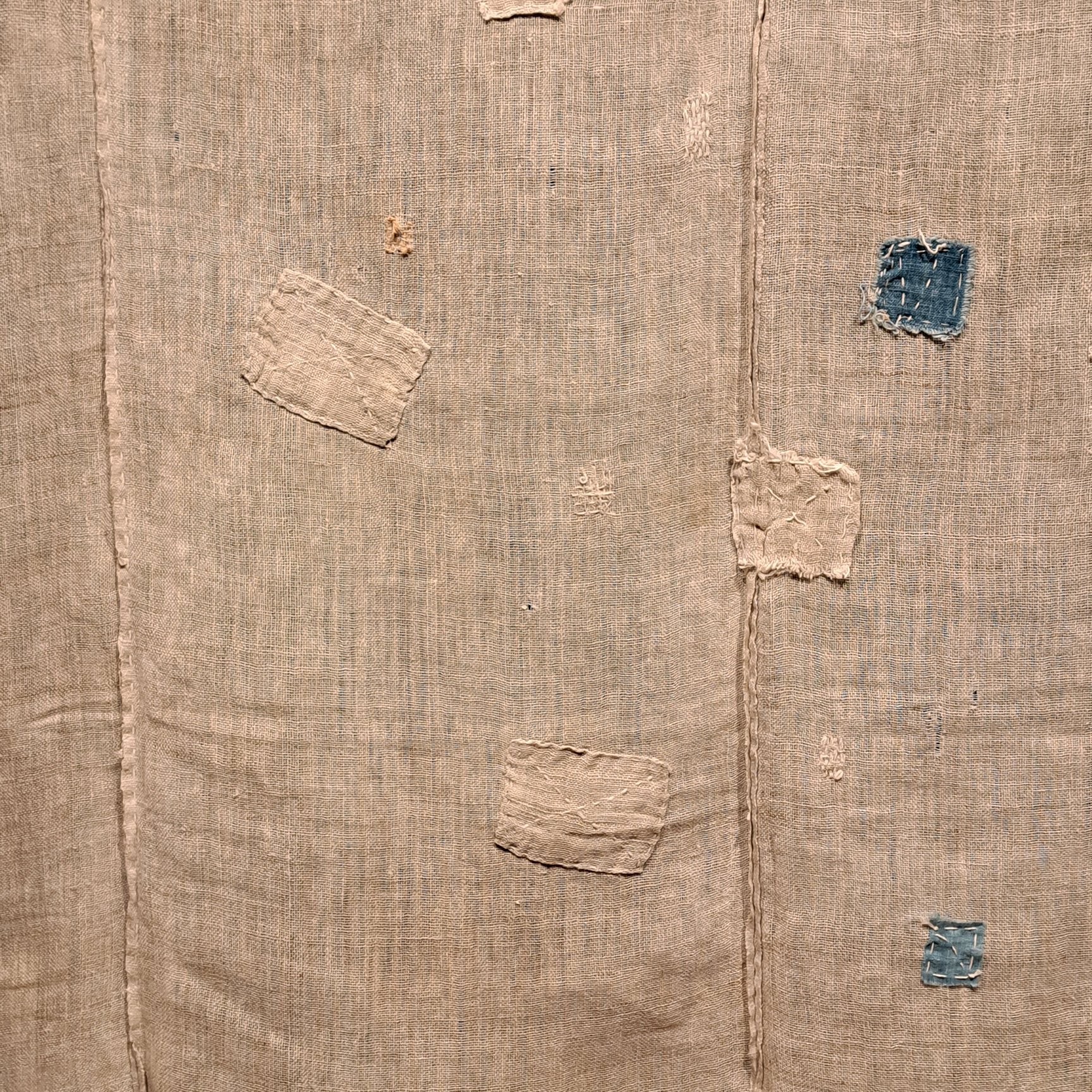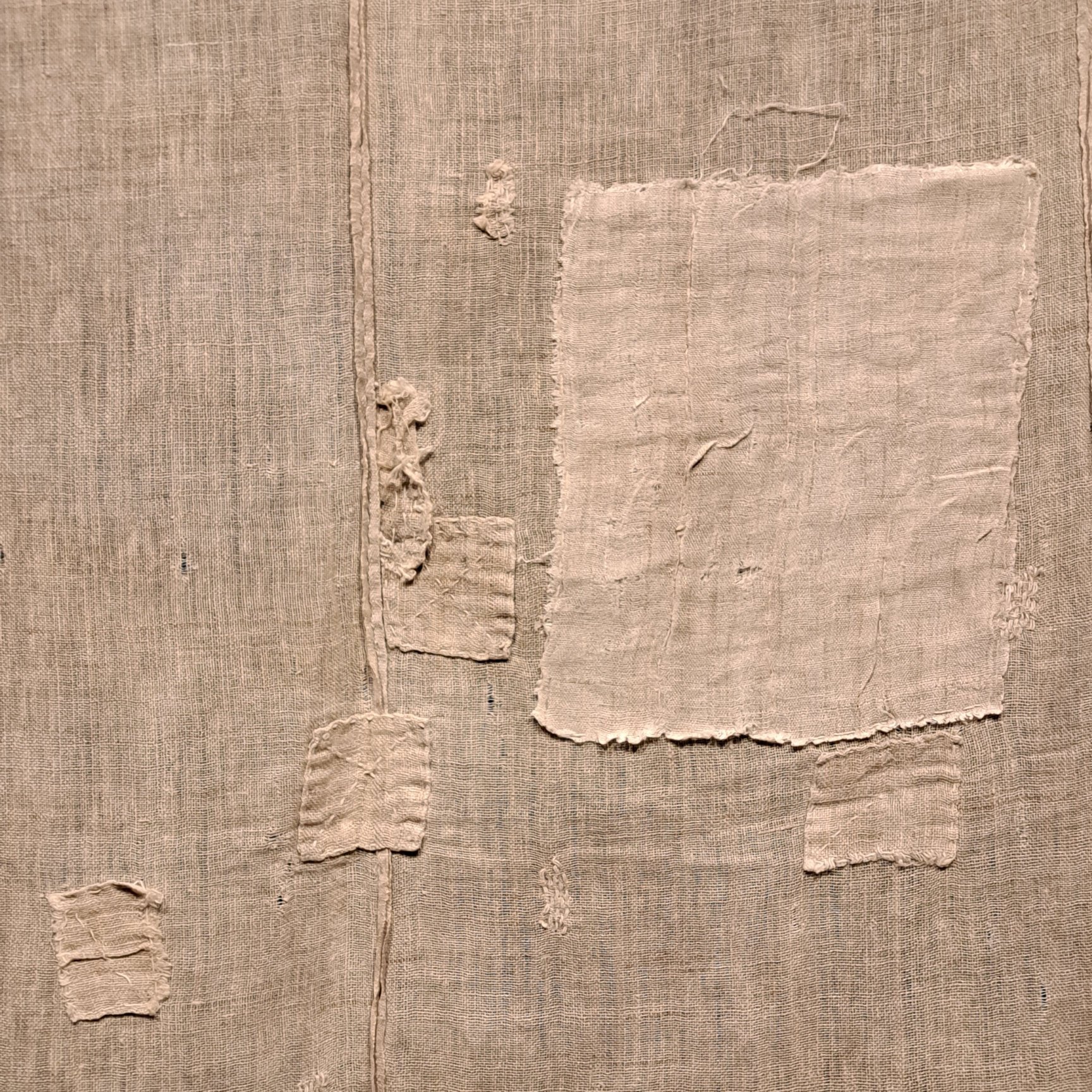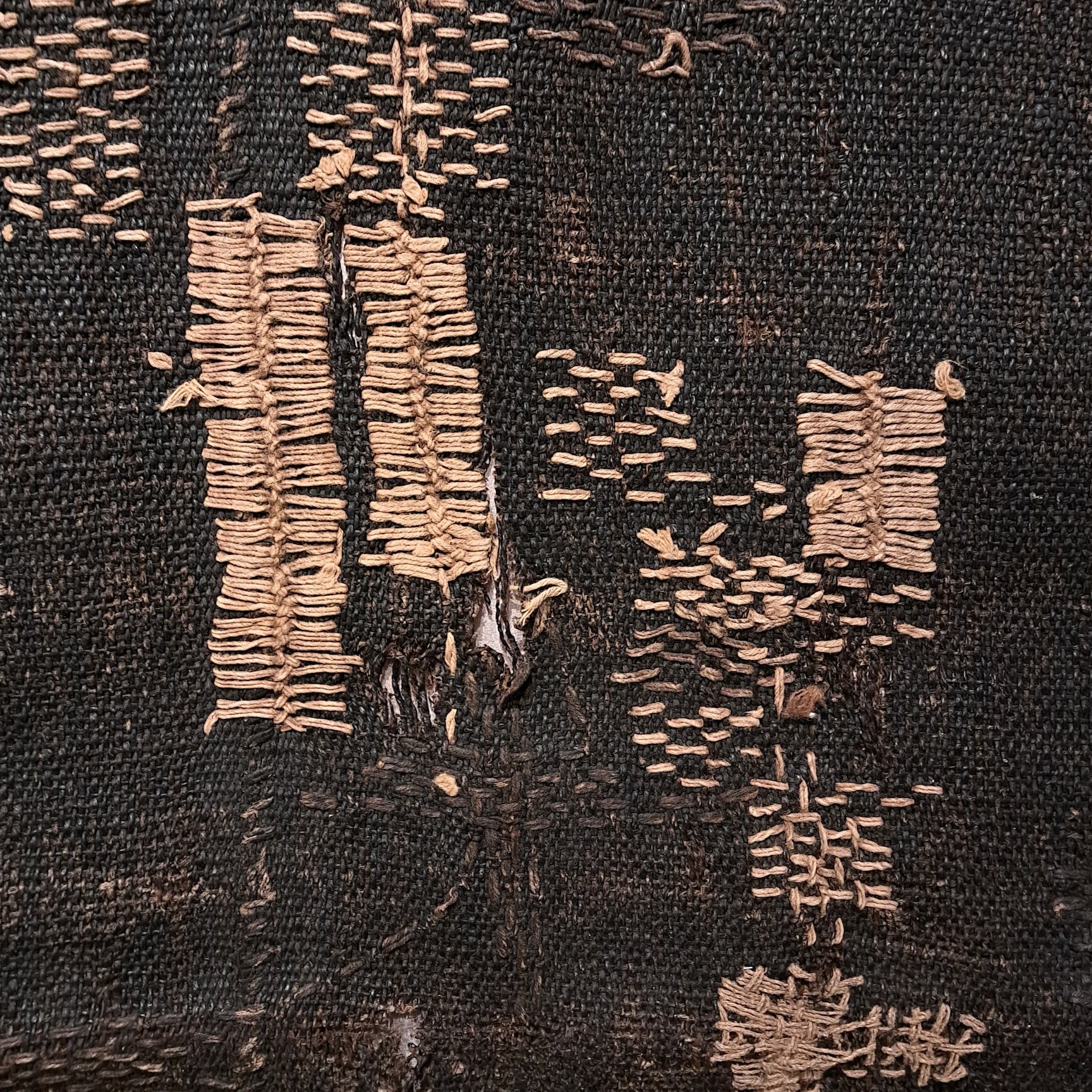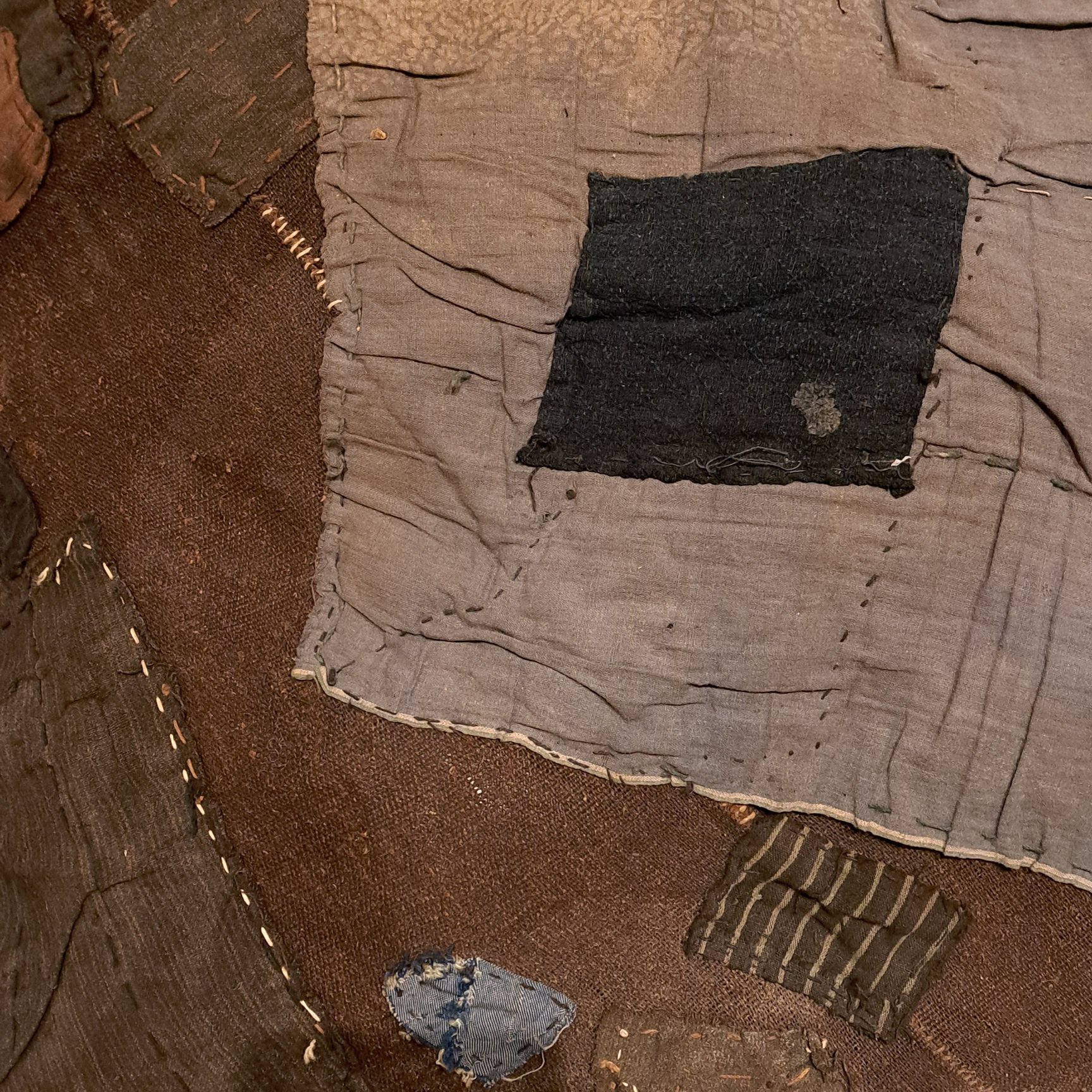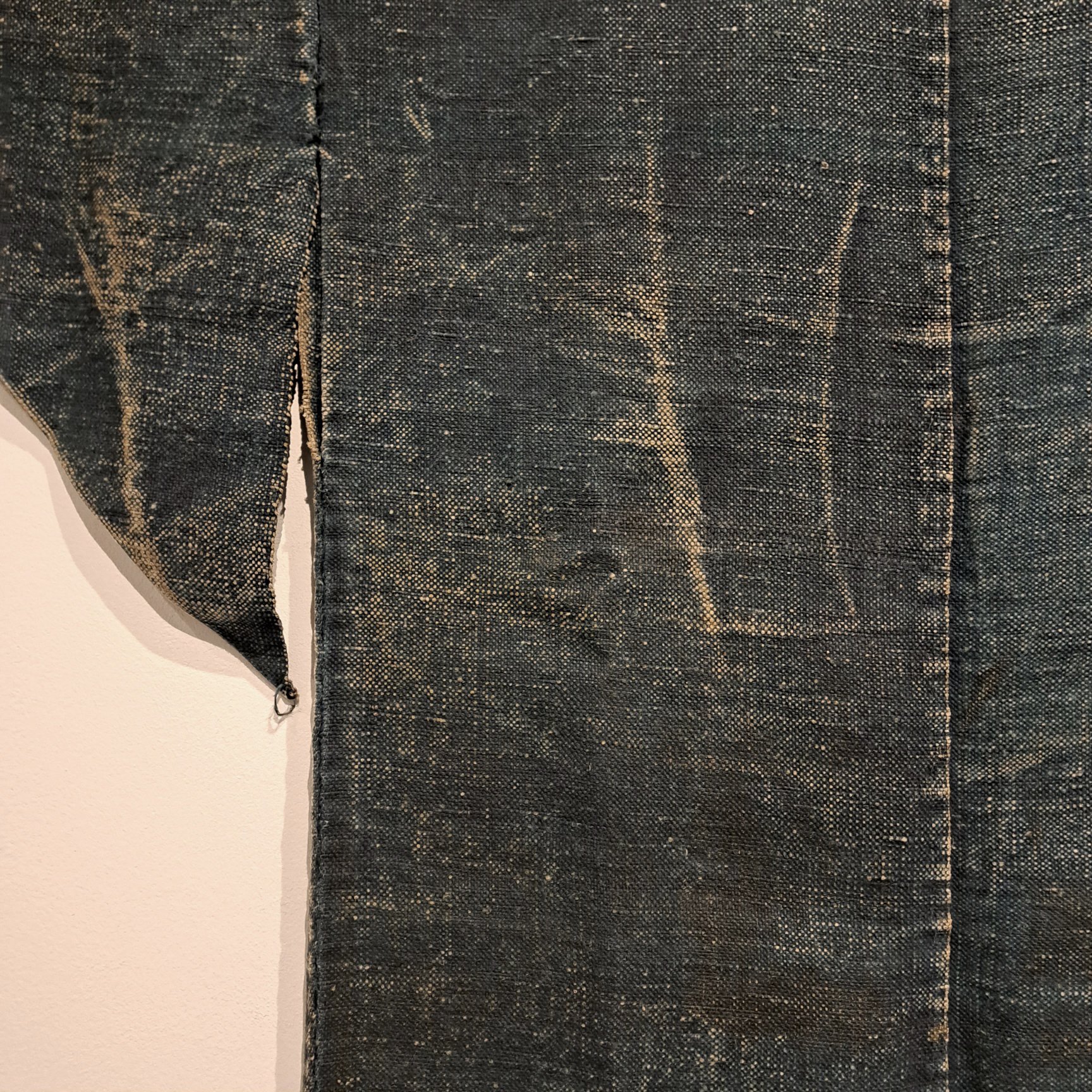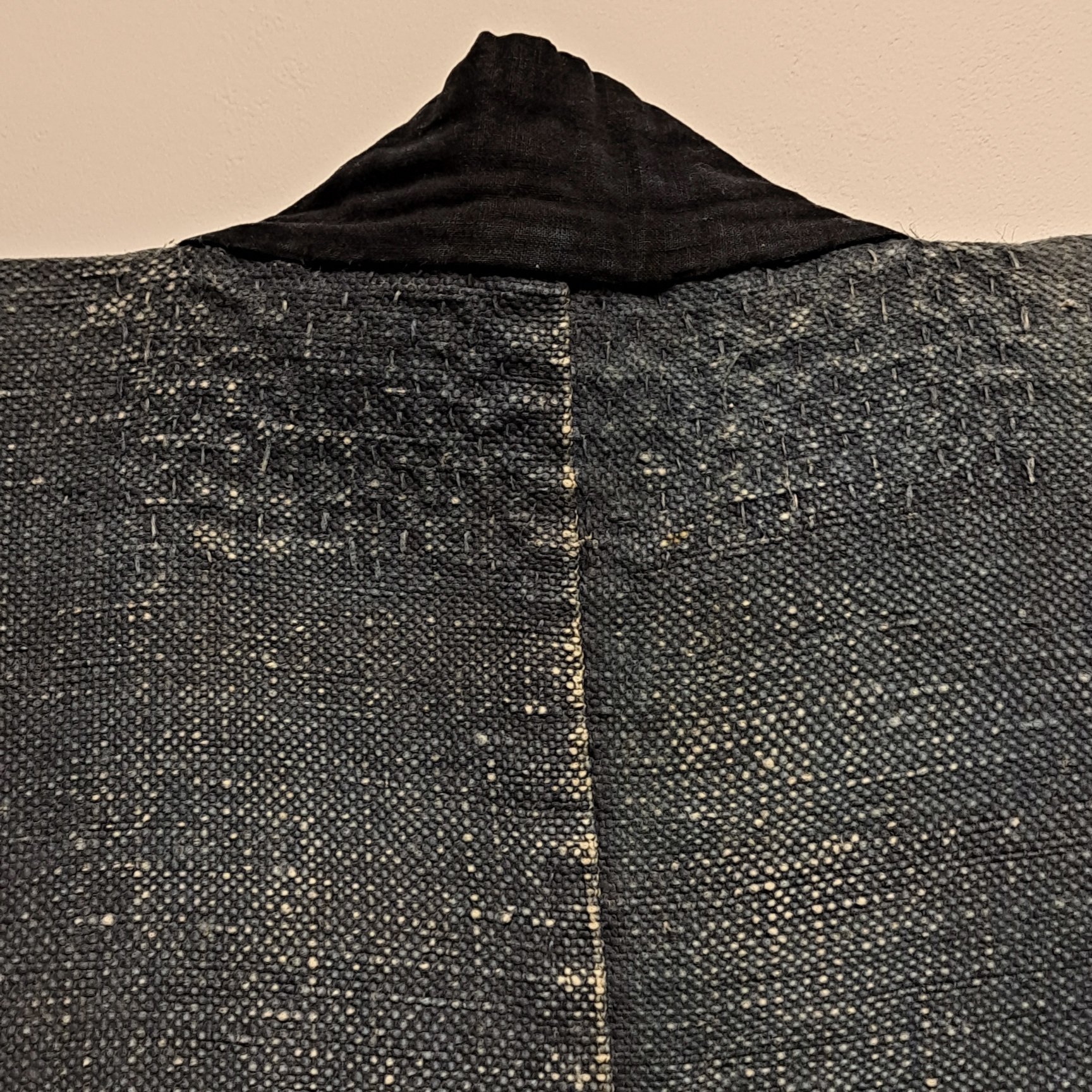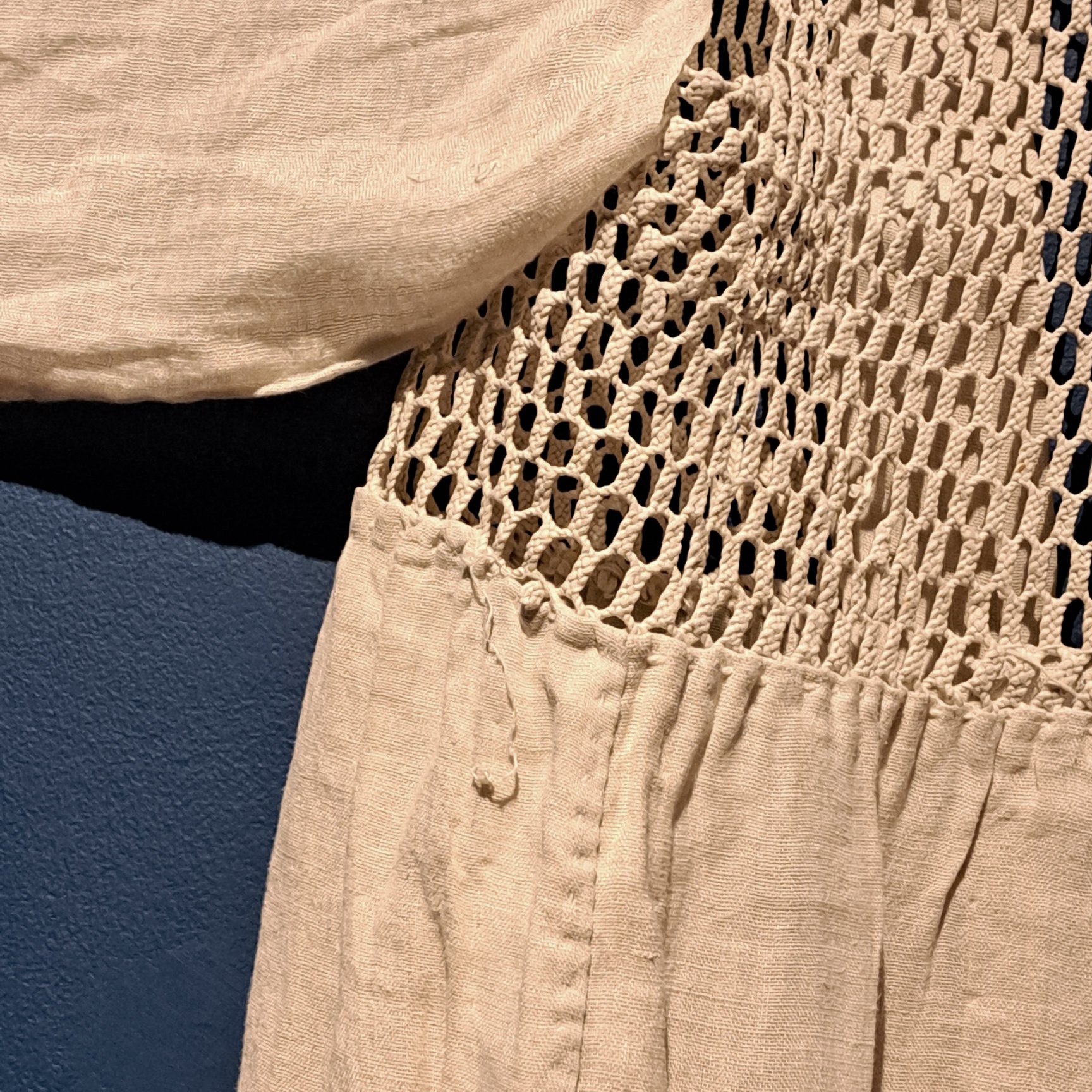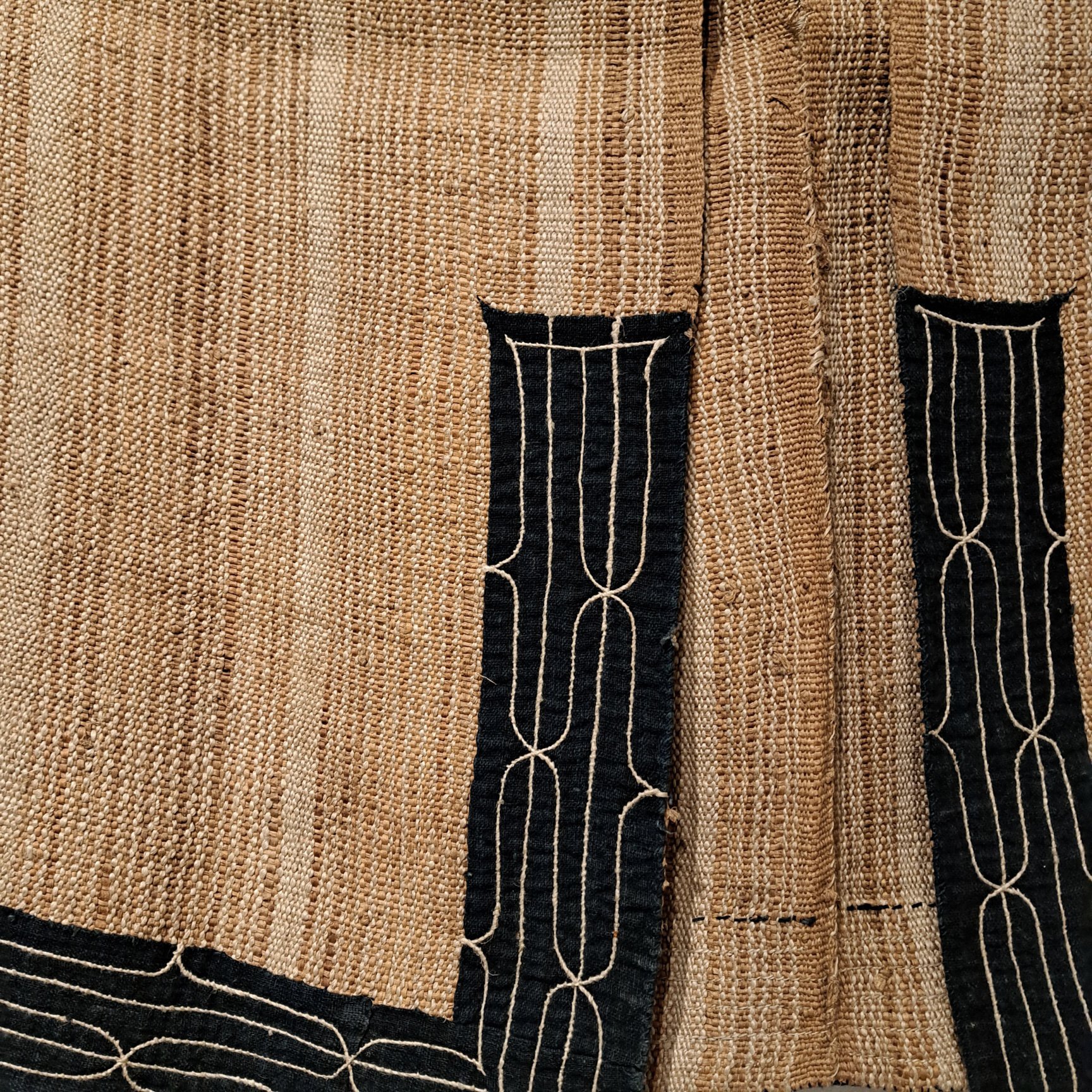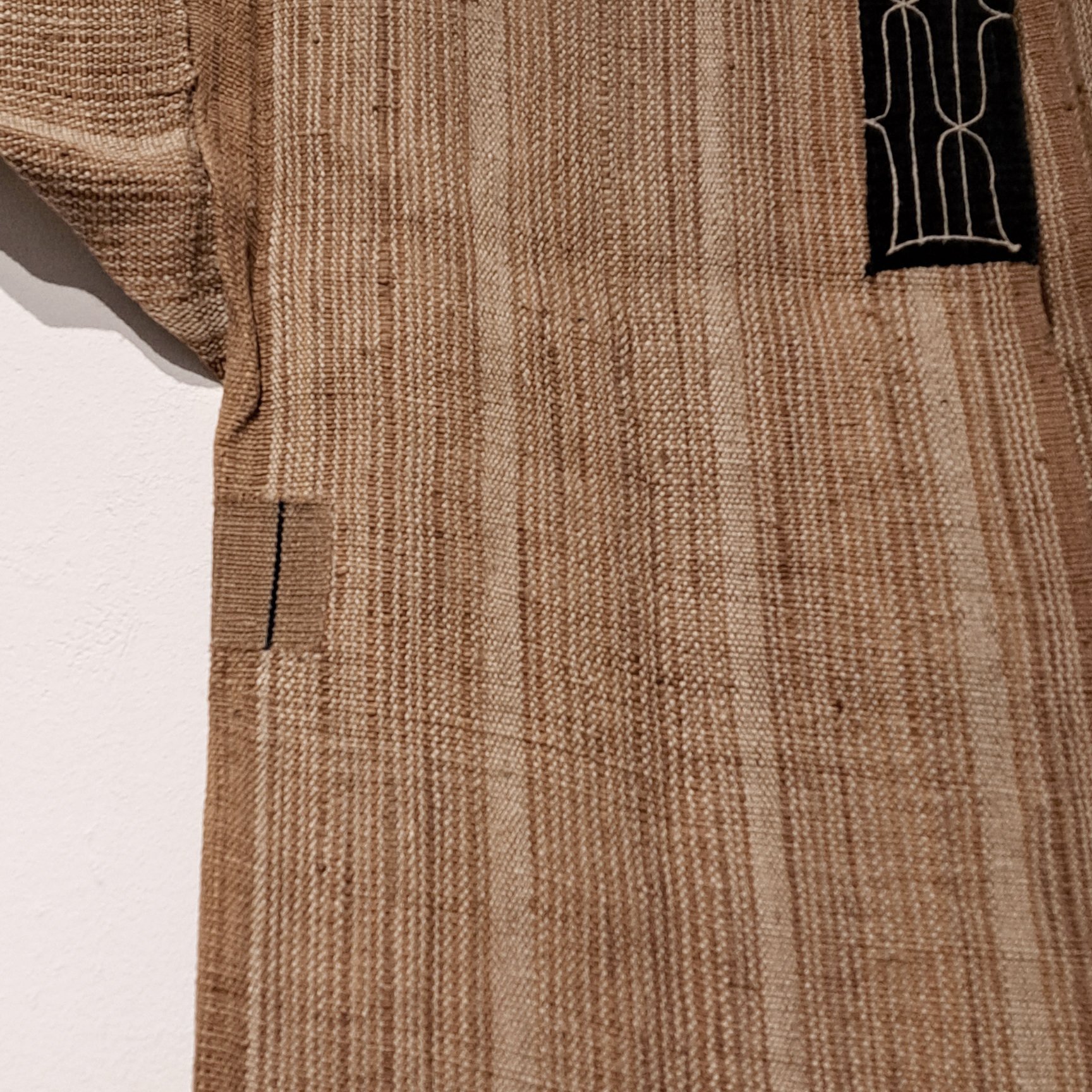A Sense of Mottainai
Mottainai - a feeling of regret when something is put to waste without deriving its value.
Last weekend we spent a rainy Saturday afternoon completely absorbed in the ‘Japanese Aesthetics of Recycling’ exhibition at the Brunei Gallery at the School of Oriental and African Studies. This is the latest show at SOAS from Karun Thakar’s extraordinary collection of textiles and objects.
The images above are late nineteenth and early twentieth century Boro shikifuton - patched and mended indigo-dyed futon coverings.
The show includes many examples of late nineteenth and early twentieth century repaired work wear - indigo dyed and resist-printed cotton work coats which have been mended over and over again. Patches are sewn on top of patches, holes are darned, seams are reinforced, and slowly with use and over time an extraordinary patina develops.
The results are beautiful subtle compositions of texture and colour… but of course these Boro fabrics were never intended as art pieces… they are the products of thrift, care, and endless re-use.
Some pieces were so fragile and layered and worn you almost lost all sense of the original fabric.
Above here is a gauzy mended hemp ‘Kaya’ mosquito net - the fine patches lending the work the feel of abstract minimalism.
Below left is a beautifully darned piece used in the process of brewing sake, and below right a patched and re-patched storage bag.
The seductive aesthetics of all these pieces, combined with their inherent philosophy of mottainai make for a compelling and very pressing relevance in today’s throw-away fast-fashion culture.
But for me the most extraordinary revelation of the exhibition was the ingenuity and range of fibres used in the original fabrics. Cotton and hemp are of course familiar today, but alongside these are Shina fu (fibres made from the bark of the linden tree). Both the piece shown above are woven with linden fibre, the high tannin content of the bark resulting in the dark brown hue in the bag above right.
The late nineteenth / early twentieth century indigo-dyed coat above is made from Fuji-fu - wisteria bark fibres woven with washi paper. Wisteria bark is an ancient Japanese fibre, and dates back to the Jomon period (14,000 - 300 BCE). The area around the collar is beautifully reinforced with darning stitches.
The beautiful net-like undergarment above is made from shi-fu - a thread made from paper.
And below is a late nineteenth/ early twentieth century Ainu robe, made from Atushi - Elm bark fibres. I love the undulating pattern on the braided decoration and the careful little patch below the sleeve.

